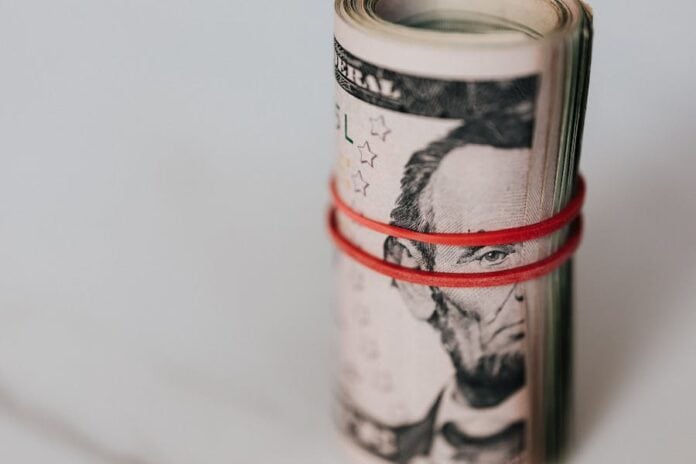Coins have fascinated collectors and enthusiasts for centuries. Among the myriad of coins minted in the United States, quarters hold a special place due to their rich history and varied designs. While most quarters are worth their face value, some are prized by collectors and can fetch significant sums of money. But how do you know if the quarters in your pocket change are worth more than 25 cents? In this comprehensive guide, we will explore the US quarters worth money, delve into their unique features, and provide tips on how to identify these valuable coins. Whether you’re a seasoned collector or a curious novice, this article will equip you with the knowledge to spot those hidden treasures.
Are Us Quarters Worth Money?
Yes, some US quarters are worth more than their face value. Factors like rarity, historical significance, minting errors, and special editions can make certain quarters highly valuable to collectors. Key examples include the 1932-D Washington Quarter, the 1970-S Proof Washington Quarter, and the 1999 Delaware Spitting Horse Quarter.
Uncovering Valuable US Quarters
Coins are not only fascinating pieces of history but also potential treasures hidden in plain sight. Among US coins, quarters are particularly intriguing due to their varied designs and historical significance. From the earliest Draped Bust quarters to the modern State Quarters, these coins have been a part of American life for over two centuries. Each design change and minting era adds a unique layer of interest and value, making certain quarters highly sought after by collectors.
Several factors contribute to the value of US quarters, with rarity being one of the most significant. Quarters that were minted in limited quantities or were part of short production runs are often more valuable. Additionally, minting errors, such as double dies, off-center strikes, and misprints, can turn an ordinary quarter into a prized collectible. These errors are rare and occur during the coin’s production, making them unique and highly valuable to collectors.
Historical significance also plays a crucial role in determining the value of a quarter. Coins minted during significant periods in American history or those that commemorate important events tend to be more valuable. For instance, quarters minted during the early years of the United States, such as the 1796 Draped Bust quarter, are highly prized for their historical context and rarity. Similarly, quarters that are part of a special series, like the Bicentennial Quarters or the America the Beautiful Quarters, often hold higher value due to their commemorative nature.
Collectors should also consider the condition and grading of the quarters. The coin’s condition, graded on a scale from Poor (P) to Mint State (MS), can significantly impact its value. A quarter in mint condition with no signs of wear and tear is worth much more than a heavily circulated one. Understanding the grading scale and how it affects value is essential for anyone looking to invest in valuable quarters. By focusing on these key factors—rarity, minting errors, historical significance, and condition—collectors can identify and uncover valuable US quarters worth adding to their collections.
Why Are Some Us Quarters Worth More?
The value of US quarters can extend far beyond their face value of 25 cents, primarily due to a combination of rarity, minting errors, historical significance, and special editions. Each of these factors can significantly increase a quarter’s worth, making it a coveted item among coin collectors and enthusiasts.
Rarity is one of the most critical factors that determine a quarter’s value. Quarters minted in limited quantities or for a short period are usually more valuable. For example, the 1932-D and 1932-S Washington Quarters are highly sought after because they had the lowest mintages of the entire Washington Quarter series. These quarters are rare and, as a result, their scarcity drives up their value significantly.
Minting errors also play a significant role in increasing a quarter’s value. Errors occur during the coin production process and can result in unique variations that are not intended by the mint. Some common minting errors include double dies, where the design is struck twice, off-center strikes, and coins with missing elements. An example of a valuable error quarter is the 2004 Wisconsin Quarter, which has versions with an extra leaf on the corn stalk on the reverse side. These error coins are rare and highly desirable to collectors, often fetching much higher prices than standard quarters.
Historical significance adds another layer of value to certain quarters. Quarters that were minted during significant periods in American history or that commemorate important events tend to be more valuable. For instance, quarters from the early years of the United States, such as the 1796 Draped Bust Quarter, are valuable due to their age and historical context. Additionally, quarters that are part of a commemorative series, such as the Bicentennial Quarters issued in 1976 to celebrate the 200th anniversary of American independence, can also hold significant value.
Special editions and series also contribute to the higher value of some quarters. The US Mint has released several special edition quarters over the years, such as the 50 State Quarters program, which ran from 1999 to 2008, and the America the Beautiful Quarters program, which began in 2010. These series feature unique designs that represent each state or national park, respectively, making them popular among collectors. Quarters from these series, especially those in pristine condition or with unique features can be worth significantly more than their face value.
How To Identify Valuable Quarters?
Identifying valuable US quarters requires attention to detail and knowledge of key characteristics that can significantly enhance a coin’s value. Here are some essential tips to help you spot those hidden treasures in your coin collection:
Checking for Mint Marks
Mint marks are small letters on a coin that indicate where it was produced. These marks are crucial for identifying valuable quarters. For example, quarters minted at the Denver Mint are marked with a “D,” while those from the San Francisco Mint have an “S,” and the Philadelphia Mint’s coins are marked with a “P” or have no mint mark for older issues. Quarters from certain mints in specific years, such as the 1932-D and 1932-S Washington Quarters, are particularly valuable due to their low mintages.
Inspecting for Errors
Minting errors can turn a common quarter into a highly sought-after collector’s item. Some errors to look for include:
- Double Dies: This error occurs when the coin is struck more than once, resulting in a doubled image. The 1955 Double Die Lincoln Cent is famous, but similar errors exist in quarters.
- Off-Center Strikes: If the coin’s design is not centered, it is considered an off-center strike. The more off-center, the more valuable the coin can be.
- Clipped Planchets: This occurs when a portion of the coin’s edge is missing, giving it a clipped appearance.
- Missing Elements: Coins missing design elements, such as a date or mint mark, can also be valuable.
Condition and Grading
The condition of a quarter is a significant factor in determining its value. Coins are graded on a scale from Poor (P) to Mint State (MS), with higher grades indicating better condition. A quarter in mint condition, showing no signs of wear and with sharp details, will fetch a higher price than one that is heavily worn. The Sheldon Coin Grading Scale, developed by Dr. William Sheldon in 1949, is commonly used to assess a coin’s condition.
Key Dates and Series
Certain dates and series of quarters are known for their higher value. Collectors should be aware of key dates to look for:
- Early Quarters (1796-1838): These include Draped Bust and Capped Bust designs, which are rare and valuable due to their age and limited mintage.
- 1932-D and 1932-S Washington Quarters: These are among the most sought-after quarters due to their low mintages.
- State Quarters and America the Beautiful Quarters: Some quarters from these series, especially those with minting errors or in pristine condition, can be quite valuable.
Tips for Collectors
- Research: Stay informed about the latest trends and market values for quarters. Online resources, coin-collecting books, and numismatic associations are valuable sources of information.
- Handle with Care: Always handle coins by their edges to avoid damaging the surface. Use gloves if possible to prevent oils from your skin from affecting the coin’s condition.
- Storage: Store valuable quarters in protective holders or albums to prevent damage and preserve their condition. Avoid exposing them to extreme temperatures or humidity.
Conclusion
Collecting US quarters can be both a rewarding hobby and a lucrative investment. By understanding the factors that contribute to a quarter’s value, you can become adept at identifying those worth more than their face value. Keep an eye on minting errors, historical significance, and special editions to build a valuable collection.
FAQs
- What Makes A US Quarter Valuable?
Quarters become valuable due to factors like rarity, minting errors, special editions, and historical significance.
- How Can I Identify A Valuable Quarter?
Look for rare mint marks, inspect for minting errors, and evaluate the coin’s condition using the grading scale.
- Are Modern Quarters Worth Collecting?
Yes, modern quarters, especially those from special series like the State Quarters, can be valuable due to unique designs and minting errors.
- Where Can I Sell Valuable Quarters?
You can sell valuable quarters at coin shows, online auctions, or through coin dealers who specialize in rare coins.
- How Should I Store My Valuable Quarters?
Store valuable quarters in protective holders or albums, keep them in a cool, dry place, and handle them carefully to prevent damage.












